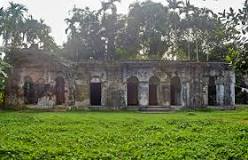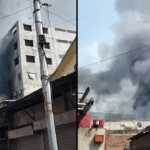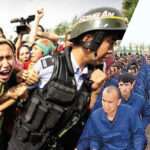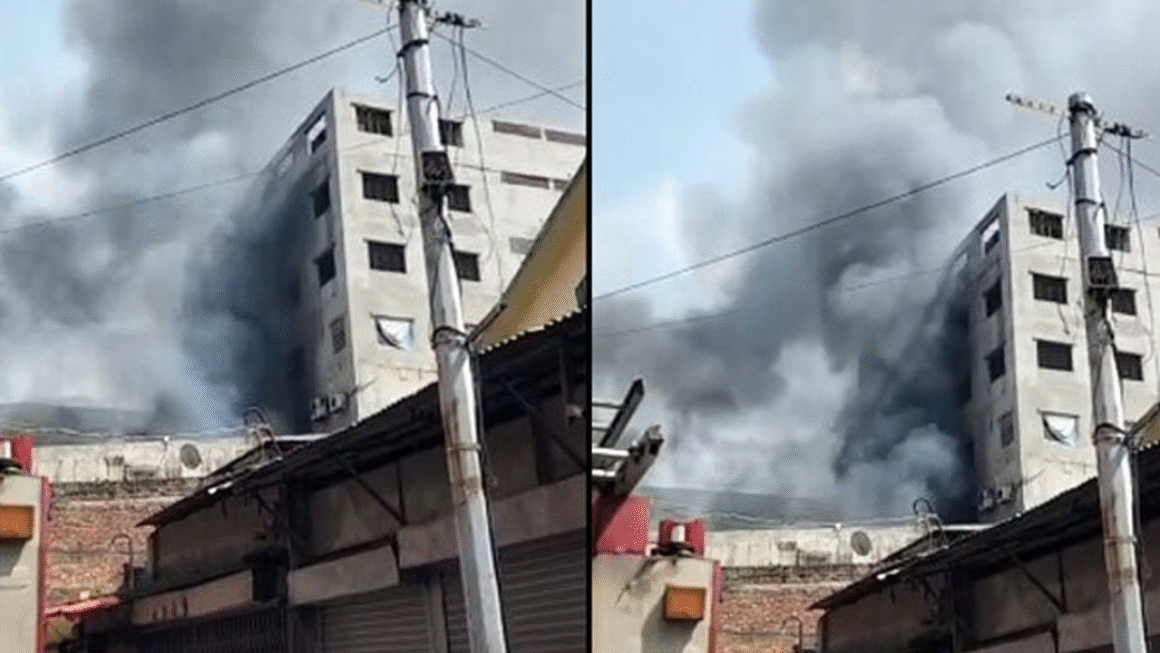 Esha Kha’s Junglebari: A Living Witness of Bengal’s Glorious History-
Esha Kha’s Junglebari: A Living Witness of Bengal’s Glorious History-
Among the many historical landmarks in Bangladesh, Esha Kha’s Junglebari stands out as a captivating destination that echoes the legacy of bravery, resistance, and strategic brilliance. Located in the Junglebari village of Karimganj Upazila under Kishoreganj District, this ancient fort served as a strategic base for Esha Kha, one of the most powerful leaders among the Baro Bhuiyans who resisted Mughal expansion in Bengal.
Who Was Esha Kha?-
Esha Kha was a prominent Afghan-origin military commander and regional ruler during the late 16th century. As one of the Baro Bhuiyans, he played a critical role in resisting the Mughal empire’s attempts to dominate Bengal. Known for his military strategies and governance, he ruled large parts of Bengal and built strongholds to protect his territory and people.
The Historical Background of Esha Kha’s Junglebari-
Junglebari was not just a place of residence but a fortified military base from where Esha Kha operated during the peak of his resistance against the Mughals. Historical accounts suggest that when the Mughal pressure intensified in Sonargaon and Dhaka, Esha Kha strategically relocated to Junglebari and built a fortress atop a high mound surrounded by natural barriers and canals to defend against invaders.
Architectural Features and Preservation-
The architecture of Esha Kha’s Junglebari is a mixture of Afghan and local Islamic styles. The fort was constructed on a raised platform with strong earthen walls and defense structures. Though time has eroded much of its original structure, remnants of the fortification, mosque, and water reservoir still stand today. Unfortunately, preservation efforts remain limited, but the site still attracts historians and curious visitors alike.
What to See in Junglebari-
Visitors to Esha Kha’s Junglebari can explore:
- The ruins of the fort
- A centuries-old mosque built by Esha Kha
- A large ancient well with clear water
- Earth walls and remnants of defense installations
These elements together reflect the strategic ingenuity and cultural depth of the region during Esha Kha’s time.
How to Get to Junglebari-
From Dhaka, travelers can take a train or bus to Kishoreganj. From Kishoreganj town, Karimganj is easily accessible by auto-rickshaw or CNG. Junglebari is a short ride from Karimganj Bazar, and the roads are now well-developed and travel-friendly.
Local Life and Hospitality-
The people living around Junglebari are welcoming and proud of their heritage. Local residents often share oral histories and stories passed down from generations about Esha Kha’s bravery and wisdom. Their hospitality adds a warm, human touch to the historical exploration.
Historical Significance and Research Potential-
Esha Kha’s Junglebari is not just a fort; it is a treasure trove for historical and archaeological research. Scholars believe that detailed excavation and research in this area could reveal new insights into Bengal’s military, political, and cultural systems during the late medieval period.
Tourism Potential of Esha Kha’s Junglebari-
As a tourist destination, Esha Kha’s Junglebari holds immense potential. Every week, students, historians, and tourists visit to witness the ancient relics and soak in the historical atmosphere. With proper promotion and conservation by the government, it could become a major tourist attraction not only in Bangladesh but also for international history enthusiasts.
Esha Kha and the Baro Bhuiyan Resistance-
Junglebari played a central role in the Baro Bhuiyan resistance. It is believed that from this very location, Esha Kha planned and executed his military strategies against the Mughals. The assembly hall within the fort might have been the ground where several vital war councils were held.
Best Time to Visit and Preparation Tips-
The ideal time to visit Junglebari is during the winter season when the weather is pleasant and the surroundings are lush and scenic. Visitors are advised to carry water, snacks, and a camera. Hiring a local guide can enhance the experience by providing detailed historical explanations.
Conclusion-
Esha Kha’s Junglebari is more than a historical ruin—it is a symbol of Bengal’s indomitable spirit and a reminder of a time when local leaders stood against imperial domination. Preserving this site is crucial for educating future generations about the rich and complex history of Bangladesh. For those who cherish heritage, bravery, and untold stories from the past, Junglebari offers an unforgettable journey into the soul of Bengal’s resistance.
FAQs-
1. Where is Esha Kha’s Junglebari located?
It is located in Junglebari village under Karimganj Upazila, Kishoreganj District, Bangladesh.
2. How can I reach Junglebari?
Take a train or bus to Kishoreganj from Dhaka, then use local transport like auto-rickshaws or CNG to reach Junglebari via Karimganj.
3. Who was Esha Kha?
Esha Kha was a powerful regional leader and military commander of Afghan origin who led the resistance against the Mughal Empire in Bengal during the 16th century.
4. What can I see at Junglebari?
You can explore the ruins of the fort, a historic mosque, an ancient well, and remnants of military defense structures.
5. Why is Esha Kha’s Junglebari historically important?
It served as a strategic military base for Esha Kha during his resistance against the Mughal Empire and was a hub for the Baro Bhuiyan movement.
6. When was the fort built?
The fort was built in the late 16th century by Esha Kha himself as a stronghold against the Mughals.
7. Is there an entry fee to visit Junglebari?
Currently, the site is open to the public without any entry fee. However, this may change if the government takes steps for conservation and tourism development.
8. Is it safe to travel to Junglebari?
Yes, the area is generally safe, and local people are friendly and cooperative. Regular police patrols ensure additional security.
9. Is Esha Kha’s mosque still active?
Yes, the mosque built by Esha Kha is still used for prayer and remains a spiritual as well as a historical center.
10. Has there been any archaeological research done on the site?
Some limited studies have been done, but there is immense scope for more in-depth archaeological and historical research at the site.












